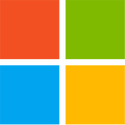Wednesday, October 10th 2018

Microsoft's xCloud is a Push Towards Game Streaming Future, Powered by AMD
Microsoft has announced their xCloud initiative, a game streaming effort that looks to bridge the gap between local and stream-based gaming. xCloud is looking to bring true, platform-agnostic gaming with much lower bandwidth requirements due to a number of technologies being researched and worked on by Microsoft. Chief among these are low-latency networking, encoding, and decoding advances - all crucial parts of the puzzle for solving latency and poor image quality issues. xCloud aims to allow for "high-quality experiences at the lowest possible bitrates that work across the widest possible networks" - with 4G and 5G support. For now, the test version of xCloud only requires a minimum 10 Mbps connection, which is already very impressive in abstract - though of course it would require more info on the rendering specs being delivered to the recipient's system for deeper analysis.
One big takeaway here is that this xCloud initiative is fully powered by AMD's own hardware - as it should be. Using AMD custom hardware such as that found within Microsoft's Xbox consoles takes away the work and investment in building even more emulation capabilities on a server level, which would only add additional overhead to the streaming service. By using AMD's own custom hardware, Microsoft circumvents this issue - but entrenches itself even more on AMD's own product portfolio, both now and in the foreseeable future.
Sources:
Microsoft Blogs, via PCGamesN
One big takeaway here is that this xCloud initiative is fully powered by AMD's own hardware - as it should be. Using AMD custom hardware such as that found within Microsoft's Xbox consoles takes away the work and investment in building even more emulation capabilities on a server level, which would only add additional overhead to the streaming service. By using AMD's own custom hardware, Microsoft circumvents this issue - but entrenches itself even more on AMD's own product portfolio, both now and in the foreseeable future.
For AMD, this is amazing news - more volume of parts being shipped rather than just for the console market means increased revenues, but more importantly, this is a big win in the server space for the company. AMD's custom silicon strategy started with a market penetration outlook of offering the cheapest custom x86 and graphics IP technologies, but now? AMD has made itself the only player in this game, and everybody knows the first step to remain relevant is to make one virtually irreplaceable. I can't really overstate how important this could be for AMD's long-term future - they're crossing the bridge between offering localized hardware solutions (game consoles) through to the (for some) unavoidable future of game streaming.Microsoft will be rolling out xCloud in steps over its Azure data centers worldwide, throughout 54 'regions' and 140 countries. Microsoft has already rolled out its custom server racks into one of its data centers in the US, and public trials for the game streaming service are scheduled to begin in 2019.

41 Comments on Microsoft's xCloud is a Push Towards Game Streaming Future, Powered by AMD
PS Now or GameFly
Each step I take in-game requires a pure, uninterrupted connection due to the constant back and forth. This happens now with your game install, but to depend on internet for it? No thanks.
Amazing that the very thing MS banked on (PCs) is somehow adopting the same strategy Google/Sun/Oracle tried to win against them with though. Some dumbass UNIX/terminal centric developer got in their ranks. By that, I mean disempowered user bases.. lack of ownership, lack of control over one's machine. It's downright un-American. The legacy of the PC is FREEEEDOM :p
edit: Ahem. Also, as a game modder, there's absolutely nothing for me here.
Good for the late '90s when 3DFx was The King, but 20 years later.... you need x20 more bandwidth for a Full HD experience and low latency.
Seriously, those people are living in a dream world.
This service is not targeting the few but the many
So this service would most likely suit casual gamer's needs
just very much doubt its going to meet the few's needs though.
@W1zzardHave you ever had contact with actual movie bitrates? Do you know how large would video files be if what you said was correct...?
Netflix recommends 25Mbps for 4K (24 fps) and the actual use is more like 15Mbps.
Not that the lag would not be manageable, more so for Microsoft who genuinely have data centers all over the world.
I wonder if the imagery of putting XBox hardware into the rackmount chassis has anything at all to do with reality. It seems a horrible computation/power density. I suspect this is all virtualized and running on good old regular servers with AMD GPUs. Not even sure if Powered by AMD has much meaning beyond GPUs.Large part of the target market is mobile. 720p-ish will more than likely work just fine.
With h.264 the bitrate for 720p at 30fps is ~5 Mbps and at 60fps ~7.5 Mbps. With HEVC, cut that in half.
Work on fast (and hardware-assisted) encoding has been going on for a while now. The modern history for it starts with Onlive in 2010 and both the technologies as well as hardware performance have improved since then.
As much as me or probably most other people in this thread will hate it, 720p and maybe 1080p will be "good enough" for the target market.
Streaming will definitely not target 4k@60fps. Hell, Xbox One X and PS4 Pro usually target 4k@30fps or lower.
Bidirectional data requirement in terms of bandwidth is very small. It is almost all incoming data, input is sent back and not much else. Some diagnostic data on connection, probably, but not all the time.
By the way, Microsoft has said their current test is running at 10Mbps.
Usually, the initial test is the most compatible and best quality/bandwidth option. It will scale both up and down when they launch.
During cloud gaming you're uploading the exact same data you do in multiplayer + the resolution you're requesting.Again: what?! Even if we use numbers you've mentioned above, that's 50Mbps for 4K 60 fps, so more than most gaming PCs/consoles can output.
I can't even buy such a slow connection for home today. The minimum my ISP offers is 150 Mbps. I have 250Mbps now and I don't even notice when my gf watches 4K content.
A general remark: you're talking about cloud gaming like if it was some distant future you don't believe in. Such services are already here. You can try them if you want.
The discussion here is not whether cloud gaming works (since it already does), but whether it could replace local rendering for millions of users.
Although the difference between frames at 60 fps is much smaller than at 30 fps so compression is more effective. In reality the difference from 30 to 60 fps tends to be 50-60% range.
The main angle of attack for making game streaming better is network latency.
The 50-60 %figure is more or less correct for video. Hard to say how it would transfer to games, but it's almost sure the ratio is below 1. :-DHardware encoding and decoding combined contribute maybe 10-20 ms to the total latency.
Decoding is really quick (2ms).
Encoding is... well, depends which company you're a fanboy of:
blog.parsecgaming.com/nvidia-nvenc-outperforms-amd-vce-on-h-264-encoding-latency-in-parsec-co-op-sessions-713b9e1e048a
If you have a very solid wire connection end-to-end and the server is nearby, you'll looking at 10-20ms ping + everything that the actual gaming adds on top.
If you're on a mobile network or using WiFi at home (like most people do), you're looking at 40ms+ ping anyway.
BTW: This parsec platform looks promising. I'll check it after work. They're setting up an AWS machine for you and take care of video and stuff. If I understand correctly, you're allowed to install your own games.
For example:
Its also not 10ms. Its way, way more. Even the fastest connections I have ever had in an MMO were limited to 16ms and that is with a 100% wired local network too. And that's not a video stream, but just inputs and the regular multiplayer stuff. You can safely double or triple that when you speak of cloud gaming. In that sense its comparable to console gaming in terms of latency. Or having hard Vsync on at 30 FPS. And no Xcloud or anything will radically change that - and we're talking about best case scenario, too.
The good side of this is that on cloud the game is perfectly synced.
What happens in a normal multiplayer session is: each player's character is run by a PC, but the whole environment (like monsters etc) is done by the server. So when you get a bit of lag things teleport in different directions and so on. I remember this very well from my Diablo II years. :-)
If everything is done by the server, you won't have this effect. Lag or hangs will mean everything stops for a moment.
Also, it's very... fair. The game runs equally well for all people in the session. Everyone are harmed by CPU hangs and so on. Your only real handicap is your connection latency.
IMO, once we learn how to minimize the lag, (private) cloud hosting could actually improve multiplayer gaming - especially competitive one.
Bandwidth and latency are pretty separate. With bandwidth you basically either have enough or you don't :)